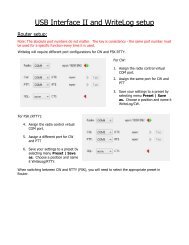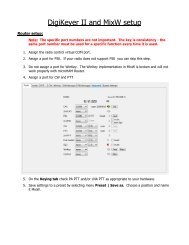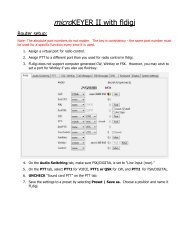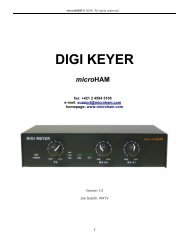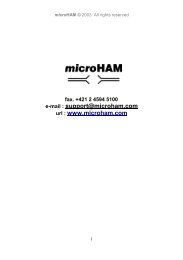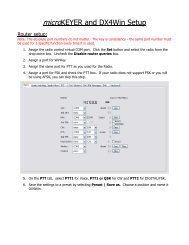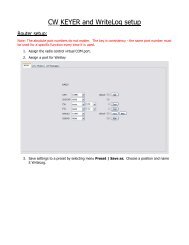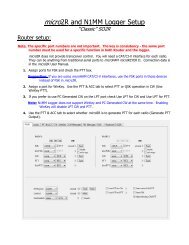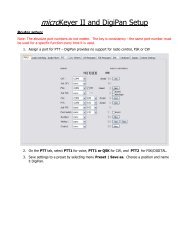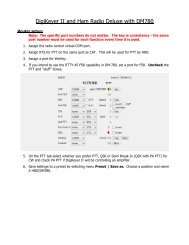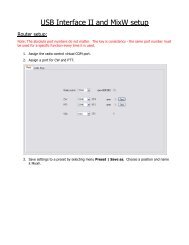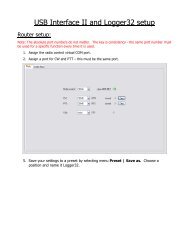DIGI KEYER II - microHAM
DIGI KEYER II - microHAM
DIGI KEYER II - microHAM
Create successful ePaper yourself
Turn your PDF publications into a flip-book with our unique Google optimized e-Paper software.
<strong>microHAM</strong> © 2010 All rights reservedPW1 on radio bus – When this box checked, Router periodically generates an Icom "Transceive"broadcast to keep the PW1 synchronized.Tracking:NOTE: Check this box if you have an IC-PW1 or other Icom compatible accessory physicallyconnected in parallel with the transceiver. Do not check this box if the only connection is to thetransceiver and the PW1 or other other accessory is connected to the accessory CI-V port(described later).Tracking: This function allows an external receiver to track the transceiver attached to DK <strong>II</strong>.NOTE: The transceiver attached to DK<strong>II</strong> must be properly interfaced and CAT must befunctioning properly. Tracking does not work for “no radio” choices.Radio: Specifies SDR receiver model.Source QRG: Specifies whether the SDR will track the transceiver transmit or receive frequency.Port: Specifies COM port used to communicate with the SDR.Offset: Frequency offset between the receiver and transceiver. Default is 0Hz, resolution is 1Hz.NOTE: For specific receiver configurations, please refer to Appendix C..The bottom two-thirds of the Radiowindow is a serial communicationmonitor. The monitor uses colors andtags to indicate which device isresponsible for the data. Black queries(H1-TX or H2-TX) and gray radioresponses (H1-RX or H2-TX) are fromthe "host" application (e.g., logger), H1indicates the host application on themain CAT port, H2 is the hostapplication on the 2 nd CAT port. Greenpackets (R-TX and R-RX) arepolls/responses from/to Router and notrouted to the application.Router monitors the communicationwhen the host application performscontrol and polls the radio periodicallyfor any missing information (VFOfrequencies and mode). Becausesome applications do not poll the radioregularly or completely, Router mustbreak this communication to update its internal state. In order to avoid confusing the application whenRouter polls the radio, data from the application is buffered and sent to the radio after Router receives aresponse to its query. If Router does not receive response to a poll within the time allowed or does notunderstand the response, it displays "oldest query discarded" but forwards all data to the virtual serial portto avoid confusing the application (logger).Since USB transmits data in frames with a delay between frames, Router indicates frame boundaries withthree dots (...). When a packet ends with three dots it means that the data continues in the next frame.20



